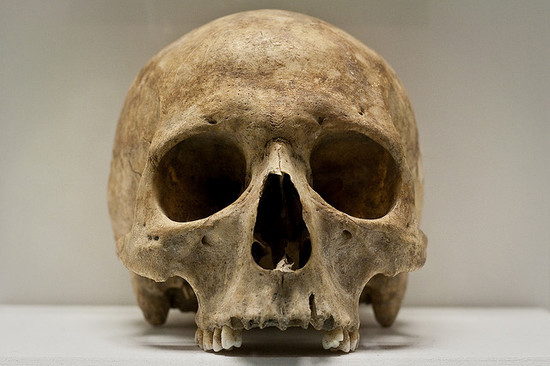Rethinking Modern Human Origins
Did modern humans appear in the world suddenly or was our species’ origin a long, drawn out process?
Did modern humans evolve suddenly or over a long period of time? Image: Fredrik Sandén/Flickr
Modern humans, Homo sapiens, originated in Africa sometime between 200,000 and 100,000 years ago. I’ve written that sentence many times. But what if it’s wrong? Paleoanthropologist Tim Weaver of the University of California, Davis argues there might be another way to interpret our species’ beginnings. Instead of a discrete origin event, he suggests in the Journal of Human Evolution that our ancestors’ arrival into the world might have been a lengthy process that occurred over hundreds of thousands of years.
Current thinking says the lineages leading to modern humans and Neanderthals split 400,000 years ago. And then 200,000 years later, Homo sapiens suddenly appeared in Africa. There’s a lot of evidence that seems to support the idea. The earliest fossils assigned to our species date to this time period. Mitochondrial DNA inherited through the maternal line backs up the fossil evidence. Modern people’s mitochondrial DNA can all be traced back to a common ancestor, an “Eve,” that lived 200,000 years ago.
But Weaver says these lines of evidence can also support an alternative scenario, in which the evolution of our species plays out over hundreds of thousands of years between the split from Neanderthals and the expansion of humans out of Africa 60,000 to 50,000 years ago. He uses genetics and mathematical methods to argue his case.
First, he shows how modern people’s mitochondrial DNA could all appear to converge at 200,000 years ago without being the result of a speciation event or a population bottleneck at that time. It’s possible, he says, to get the same picture of modern mitochondrial DNA if the population of breeding adults stayed constant 400,000 to 50,000 years ago—and if the size of that population equaled the average (called the harmonic mean) population size of the successive generations experiencing a theoretical bottleneck 200,000 years ago.
Next, he builds a model of physical evolution to show how a long process could lead to the arrival of modern human traits at about 200,000 years ago. The model follows several assumptions about the genetic basis of physical traits. Weaver also assumes changes over time in human physical traits were the result of mutation and genetic drift (random change) rather than natural selection. (He notes that differences between Neanderthal and modern human skulls, for example, don’t appear to be the result of natural selection.) By modeling successive generations from 400,000 years ago to the present, with each generation equaling 25 years, Weaver finds modern human traits should have appeared in the fossil record 165,000 years ago. That date becomes 198,000 years ago when the generation length is increased to 30 years or 132,000 years ago when the generation length is decreased to 20 years. What that means is both an abrupt speciation event or a long process could explain why modern humans seem to appear in the fossil record 200,000 years ago.
Weaver’s purpose with this work, however, is not necessarily to prove that modern human origins was a long, drawn out affair. He writes:
At the moment, both discrete event and lengthy process models appear to be compatible with the available evidence. My goal is simply to show that lengthy process models are consistent with current biological evidence and to heighten awareness of the implications of these models for understanding modern human origins.
One of those implications: If it turns out the arrival of humans was a lengthy process, Weaver says, it means nothing “special” happened 200,000 years ago to cause the birth of our species.
/https://tf-cmsv2-smithsonianmag-media.s3.amazonaws.com/accounts/headshot/science-erin-wyman-240.jpg)

/https://tf-cmsv2-smithsonianmag-media.s3.amazonaws.com/accounts/headshot/science-erin-wyman-240.jpg)